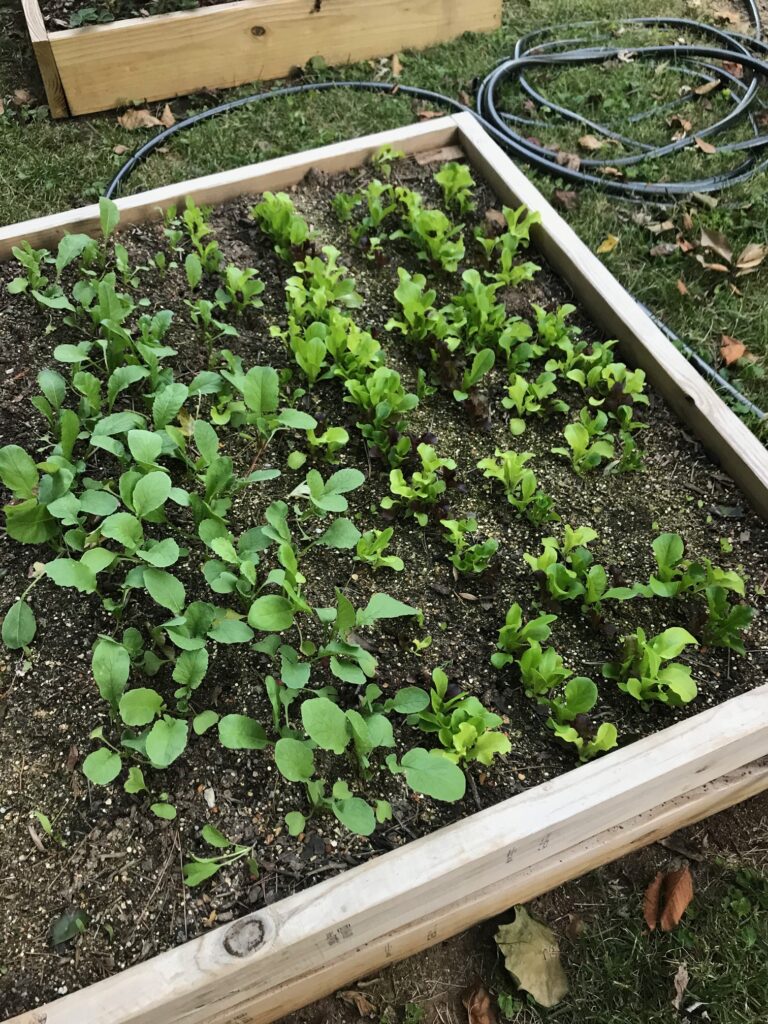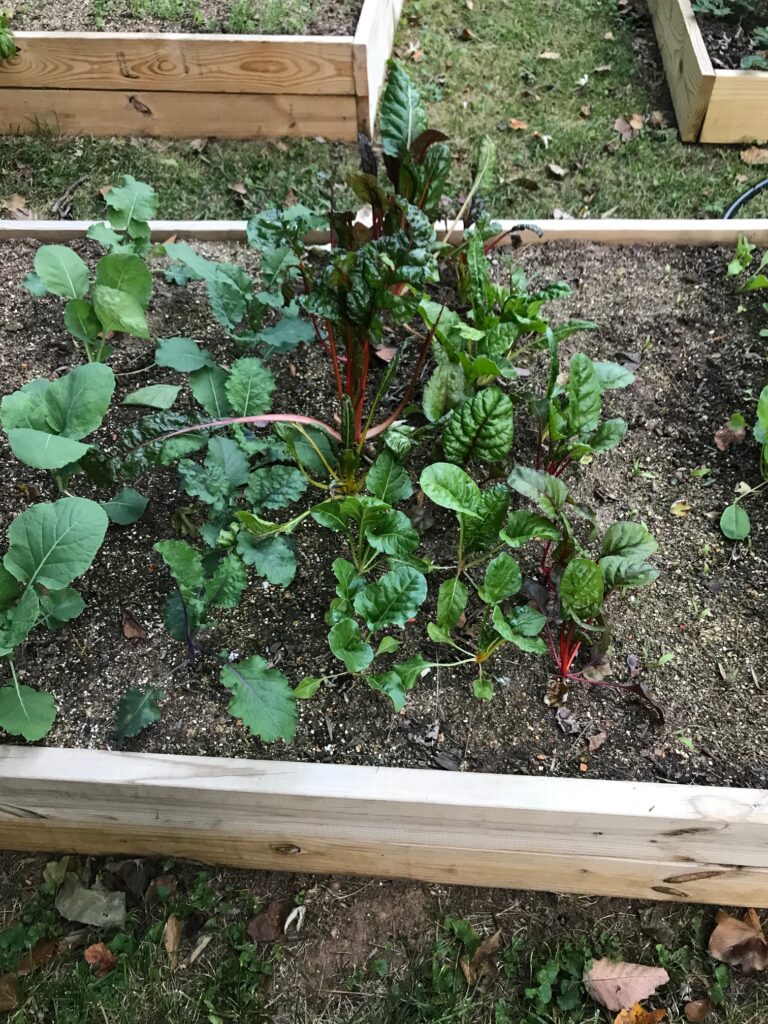Welcome back to our “Year in the Organic Garden Series!” In August, we were harvesting our summer fruits and veggies and preserving the excess. We also got our Fall garden going! If you missed the post, or want to refresh your memory, please take a look at August in the Organic Garden.

In September, our Summer’s harvest is waning or just plain done and we fully transition to cool season gardening. Read on for our suggestions on how to make the most of the month. As always, we welcome your own comments, questions and contributions to help make this an even more useful resource for our readers.
Planting your Fall Garden
A Fall garden is a “cool season” garden–just like we had in the spring. The crops that will thrive this time of year are the same ones we were working with back in March. The difference is that the weather is warm at the start of the season. Be careful to not let your seedlings fry on hot days. Frequent watering, shade cloth and planting in the shade of your remaining summer garden plants will all help your seedlings become established before the risk of excessive heat is behind us.

It is once again time to plant leafy greens, root vegetables, peas and more. March in the Organic Garden gives a great overview of cool season crops. Several crops that are best started indoors in the Spring can be direct sown in the Fall. This is due to the fact that the soil is already warm.
If you did start seedlings indoors in August, now is the right time to transplant them. Be sure to harden them off by exposing them to outdoor conditions before they go into the ground. Just like in the spring, over a week to ten days, bring your starts outside for increasing amounts of time. When they can be outside for a full 24 hours and still look great they’re ready to go!
Don’t forget to fertilize as you can be sure that your Summer garden consumed a good bit of the nutrients in your soil. Balanced organic fertilizers are great this time of year. Leafy greens will especially benefit from replenishing Nitrogen and root vegetables will need ample Phosphorus and Potassium to bulk up under the soil.
In addition to another chance to grow delicious organic produce, Fall gardens typically face less pressure from pests and pathogens than do Spring and Summer gardens. Many crops will become sweeter and even more delicious than they were earlier in the year. This is especially true for kale, carrots, beets and brussels sprouts!
Consider “Cover Crops”
If you’ve got garden space that you’re not planning to grow edible crops in this Fall…we highly recommend that you consider planting cover crops. Cover crops are selected to control erosion, keep soil aerated, break-up compacted soil, fix Nitrogen &/or provide biomass to improve soil fertility.
Common cover crops include:
- Crimson and White Clover (Biomass and Nitrogen fixer)
- Tillage Radish (Breaks up compacted soil)
- Winter Peas (Biomass and Nitrogen Fixer)
- Oats (Biomass and Erosion Control)
- Winter Wheat (Biomass and Erosion Control)

Cover crops can be planted as a single variety or as a blend. Fifth Season sells a “House Blend” of the above cover crops that we highly recommend for home gardeners.
Cover crops sown in the fall should be killed in late winter (blocking sunlight for 6-8 weeks works!), cut down and then turned into the soil before a new garden is planted. As they break down they will help to nourish your garden. Thank you cover crops!
Looking Forward October!
In October, your Fall garden will be in full swing and producing its first harvests mid to late month. It’s also prime time to plant edible bulbs (garlic, shallots, onions), Spring flowering bulbs and perennials. We’ll hit the highlights in a month!
Thank you for taking the time to read through this guide. We welcome your comments and questions. Happy organic gardening!

John Hackett says
I am trying to propagate white peach trees from branches and need growth hormone and advice.
brian says
Thanks for your question. I’ll post a link to NC State Extension Office’s information on the subject of propagation for advice on technique….they’re a great resource. As for rooting hormone, we’ve got several options in the store and on the website. Here’s one you may want to consider: https://shop.fifthseasongardening.com/products/dipngrow-rooting-solution-2-oz?_pos=1&_sid=a8976dcfb&_ss=r
Here’s the article: https://content.ces.ncsu.edu/extension-gardener-handbook/13-propagation
Best of luck!